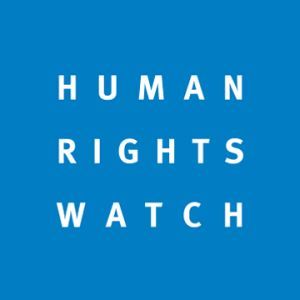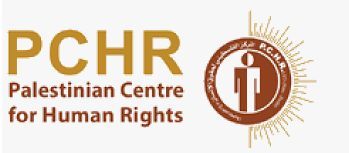This article is part of a series on news literacy designed to educate readers to better judge the reliability of news reports and other sources of information.
Have you heard of the Halo Effect? If you haven’t, it’s worth considering what a halo is – a circle of light around the head of holy people often seen in religious illustrations. The halo represents, as Merriam-Webster defines it, “the aura of glory, veneration, or sentiment surrounding an idealized person or thing.”
As such, the “halo effect” is a form of cognitive bias that does something similar, but with a twist – giving misplaced trust or authority to a person (or group) based on an idealized impression we have of that individual (or organization).
Whether we realize it or not, the halo effect impacts humans in all areas of life, including the work place, social media, advertising, academia and politics.
Which brings us to the halo effect and the news industry.
Join the fight for Israel’s fair coverage in the news
Reporters commonly cite international agencies, non-governmental organizations (NGOs) and activists and academics viewing them as authoritative, non-political, and beyond reproach. Their information is assumed reliable and their analysis is given great weight.
Of course, journalists should seek out expertise in the realms of NGOs, academia, professional associations, and elsewhere. But they must be careful not to cross certain lines.
- Journalists have a duty to independently verify facts.
- Transparency demands journalists be up front about the credibility of their sources and the limits of their knowledge.
- The undue weight given to organizations can lead to disproportionate coverage of their views, also known as imbalanced reporting.
 Addressing the relationship between the media and the humanitarian organizations, Philip Gourevitch questioned why reporters don’t treat the NGOs with a heavy dose of skepticism.
Addressing the relationship between the media and the humanitarian organizations, Philip Gourevitch questioned why reporters don’t treat the NGOs with a heavy dose of skepticism.
Too often the press represents humanitarians with unquestioning admiration. Why not seek to keep them honest? Why should our coverage of them look so much like their own self-representation in fund-raising appeals? Why should we (as many photojournalists and print reporters do) work for humanitarian agencies between journalism jobs, helping them with their official reports and institutional appeals, in a way that we would never consider doing for corporations, political parties, or government agencies? Why should we not regard them as interested parties in the public realms in which they operate, as giant bureaucracies, as public trusts, with long records of getting it wrong with catastrophic consequences, as well as getting it right?
Indeed, many news services quote highly respected groups such as Amnesty International, Human Rights Watch, Doctors Without Borders and other NGOs on issues of human rights, casualty figures and international law, among other things. Reports and statements are treated as factual, even if the methodology behind is flawed, context is omitted, or conflicts of interest are swept under the rug.
Several months after the 2014 Gaza war, I had a conversation with a journalist employed by a major Western news service working in Israel. I wanted to know on what basis her news service used inflated Palestinian civilian casualty figures during the conflict. (Disclosure: it was a chance conversation I can’t treat as on the record, which is why I’m not identifying the journalist or her news service.)
She acknowledged that accepting the figures from Hamas-affiliated “Gaza health officials” might be problematic, but said her news service relied on NGO stats because the UN accepted them. She brushed off my next questions about the reliability of the NGOs and the inability of the foreign press corps to independently verify the casualty count (more on that below).
Related reading: Defining Bias: Distortion of Facts
Examples
Although the following examples deal with the halo effect’s impact on media coverage of the Israeli-Palestinian conflict, news services are just as capable of similar problems in other conflicts and humanitarian crises.
 • Human Rights Watch being denounced by one of its founders for issuing reports simply to turn Israel into a pariah state — to the detriment of millions people ruled by Arab and Iranian autocrats. HRW’s reports on Israel get disproportionate attention in the media.
• Human Rights Watch being denounced by one of its founders for issuing reports simply to turn Israel into a pariah state — to the detriment of millions people ruled by Arab and Iranian autocrats. HRW’s reports on Israel get disproportionate attention in the media.
• Hagai El-Ad, director of the Israeli human rights organization, B’Tselem, being invited to address the UN Security Council, even though B’Tselem is on the fringes of Israeli society and gets significant financial support from European governments. El-Ad compared Israeli treatment of Palestinians to South African apartheid.
• Media attention given to anonymous soldiers’ testimonies compiled and published by Breaking The Silence. The organization’s flawed methodology and debunked allegations should have been a warning sign to reporters picking up on BtS allegations of soldiers mistreating Palestinians.
• Amnesty International co-sponsoring a US speaking tour for Bassem Tamimi, a Palestinian who was once convicted of encouraging children to throw stones at Israeli soldiers. School officials in Ithaca, NY, acknowledged that Tamimi’s talk to a group of third graders was “politically skewed and inflammatory.”
• Dr. Mads Gilbert, a Norwegian physician and activist got the media’s aura of impartiality for giving emergency medical treatment to injured Palestinians during the Gaza wars of 2008 and 2012. Gilbert — who has been involved in Marxist-Leninist and Maoist parties since the 1970s supported the 9/11 terror attacks — has stated that medicine and politics are indistinguishable. He is currently active in Norway’s revolutionary socialist Red Party.
 • Israeli casualty figures for Palestinian casualties during previous wars in Gaza diverged from more widely accepted UN figures, especially in distinguishing between combat and civilian casualties. Jonathan Dahoah Halevi researched names listed by the Palestinian Center for Human Rights (PCHR) and B’Tselem, and explained his findings to Israeli journalist Simona Weinglass:
• Israeli casualty figures for Palestinian casualties during previous wars in Gaza diverged from more widely accepted UN figures, especially in distinguishing between combat and civilian casualties. Jonathan Dahoah Halevi researched names listed by the Palestinian Center for Human Rights (PCHR) and B’Tselem, and explained his findings to Israeli journalist Simona Weinglass:
“These data banks have an enormous influence,” he says. “I found PCHR statistics in UN reports…The UN relies on them.” So Halevi published dozens of articles on a popular Hebrew news sites, reporting his findings, always precise, never overstating his claim, but scathing nevertheless . . . For his part, Halevi says both organizations are frequently inaccurate, and attributes their contortions to their political motives: “The former chairperson of the board of B’Tselem said in an interview that the organization’s goal is a one-state solution. PCHR has the same goal. They reject Israel’s existence as a Jewish state.”
Related reading: Defining Bias: Lack of Transparency
Looking Beyond the Halo
First of all, organizations such as NGO-Monitor, UN Watch and Scholars for Peace in the Middle East battle the halo effect the media gives NGOs, UN agencies and academia.
But when something about a news report niggles at you, here five things you can do to get beyond the media’s halo effect.
- When NGOs, academics or other activists are cited in the news, pay attention to whether statements are conveying information or opinion.
- Ask yourself if it’s possible for reporters to independently verify the cited info.
- Is there context to the report? Is the context explained in the reporter’s voice or attributed to any of the players in the story?
- Ask yourself if there is any reason to be skeptical of the cited activist or organization.
- See what other news reports have to say about the story.
With greater awareness of issues such as the halo effect, anonymous sources, the power of headlines and the eight categories of media bias, we can become more savvy news consumers, empowered to evaluate the increasingly complex media landscape.
Learn more. See HonestReporting’s News Literacy section for further articles and videos.
Featured image: vectors by Vecteezy;
Before you comment on this article, please remind yourself of our Comments Policy. Any comments deemed to be in breach of the policy will be removed at the editor’s discretion.


